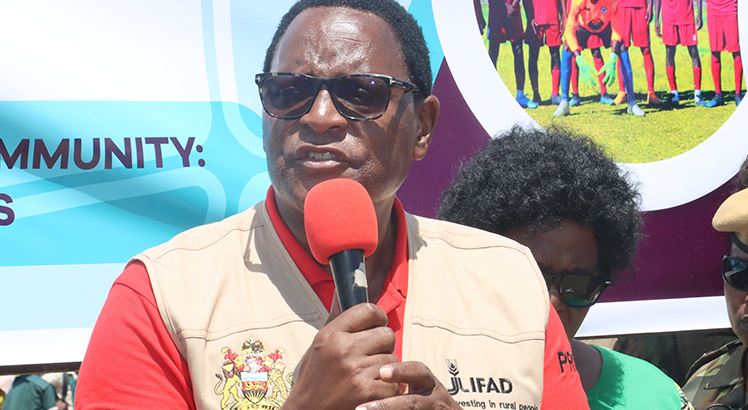Stadium report silent on complete demolition
 While calling for renovations of condemned terraces, engineers’ report on Kamuzu Stadium in Malawi’s commercial city, Blantyre, hardly recommends complete demolition.
While calling for renovations of condemned terraces, engineers’ report on Kamuzu Stadium in Malawi’s commercial city, Blantyre, hardly recommends complete demolition.
The 14-page report, which government is keeping under wraps, was produced after a site visit on September 6 2012 by structural and civil engineers, RD Consultants with the Ministry of Transport and Public Works’ Building Department officials.
As a lasting remedy to the stadium’s suspect condition, the report recommends among others “…that the stadium should have a proper individual seating plan which would accommodate seat numbering and ticketing system.â€
In reaction to Confederation of African Football (CAF) security officer Nicholas Musonye’s call for the stadium’s demolition, Minister of Youth and Sports Enoch Chihana, on Sunday, suggested that the report also recommends demolition of the stadium.
“In fact, that is exactly what the report says [complete demolition]. Government is thus trying to enter into a tripple P [Public, Private Partnership] arrangement with a South African company to build, operate and transfer. Government will retain some share since it will still be a public infrastructure,†said Chihana.
The report is supported by a 12-page picture profile of the stadium for six open terraces A to F. There is a main scare in stands C and D (popularly called the Bullets stands) which have cracks caused by fans’ jumping, underground chemicals and overloading, among others.
“The main reinforcement may have been corroded due to the ingress of water or other liquids from deep holes in the seats. There is further damage to the rebars due to possible chemicals from the nearby company [name withheld],†reads the report on stands C and D signed by Donns Luke Shawa.
“The cross beams in the two stands are the most affected. Most of the cross beams have developed cracks and have in some sections deflected. Some of these beams have concrete at the support position crushed.â€
On stands C and D, the report adds: “The cross beams and the seats are continuously exposed to resonance effects as the spectators in the stadium are jumping up and down. [Most especially the D-Bata Stand].
“With the age of the concrete, mode of casting and continuous exposure to the jumping, the beams have generally yielded to the stresses developed; hence, the development of the cracks and deflections. This has also led to the deflection of the seats resting on them.â€
The assessment was conducted as per government procedure at the Sports Ministry’s request following anger that its directive to have the 2012 Presidential Cup final between Big Bullets and Moyale Barracks played free of charge at the stadium could lead to its collapse.
The Presidential Cup final and the subsequent ones, including for the Flames are now taking place at Civo Stadium, plunging Blantyre in football action drought. The drought sparked anger that gave birth to a ‘concerned supporters’ group led by Mavuto Chibambo, who pressed Chihana to renege on complete closure.
The closure of the stadium has starved fans of action and denied top tier Big Bullets, Azam Tigers, Escom United and Mighty Wanderers bumper gate takings.
The minister assured the fans that the stadium would reopen in the next two to four weeks with the condemned terraces cordoned off while Chibambo has warned that anything less than the minister’s promise would lead to mass action as per the group’s earlier petition.
Malawi Institution of Engineers (MIE) president Dr. Matthews Mtumbuka recently said the institute supports the certified engineers’ analysis of the stadium and that with proper fans’ control measures, cordoning off the condemned terraces for renovations would be ideal than complete closure.
But the National Construction Industry Council (NCIC) recently said all things being equal, the older a stadium is, the stronger it is supposed to be, but this depends on quality of workmanship and building materials used.
Â
Recommendations
l    The cross beams and seats to stands C and D have to be demolished from the retaining wall all the way to the top.
l    Provide steel bracings in between columns in both directions to reduce effects of sway on the ahead stand columns
l    For the fill area to stand B, open up the whole section from the expansion joint downwards, backfill compact and construct new stands.
l    Refix the seats to the three rows above the expansion joint to stand B which have been displaced due to the movement made at expansion joint.
l    Remove some cross beams to stands A, B and E which have been extensively damaged and replace with new ones.
l    Erect a barrier on the middle stairs between stand E and F so that they are no longer used.
Â





